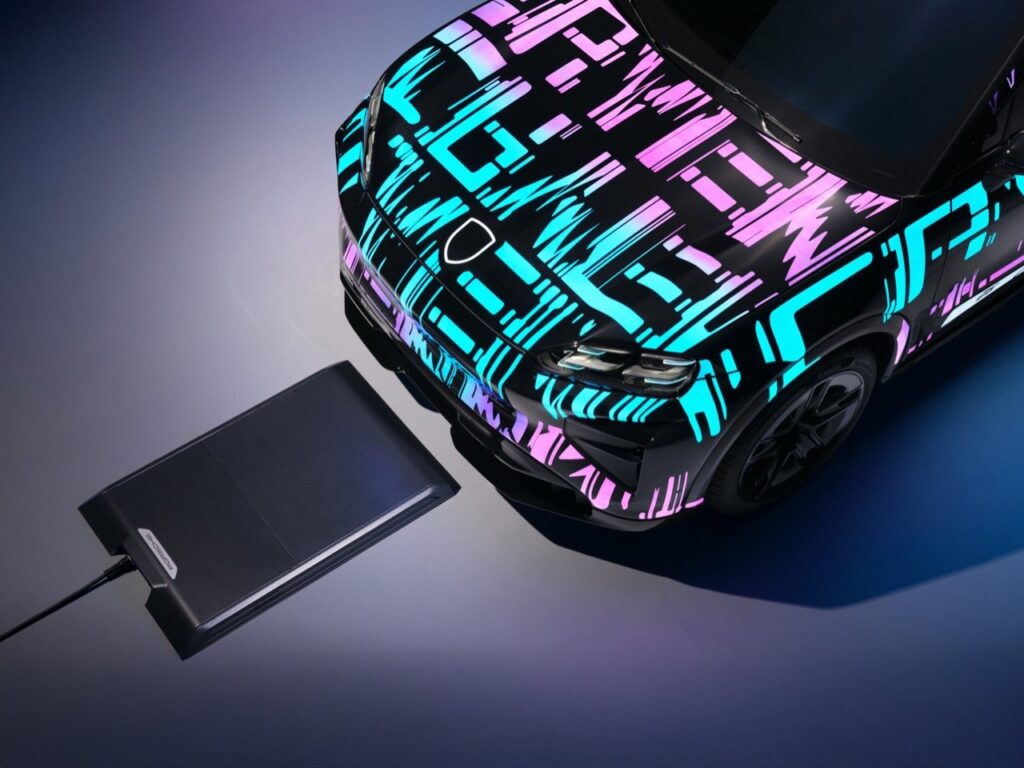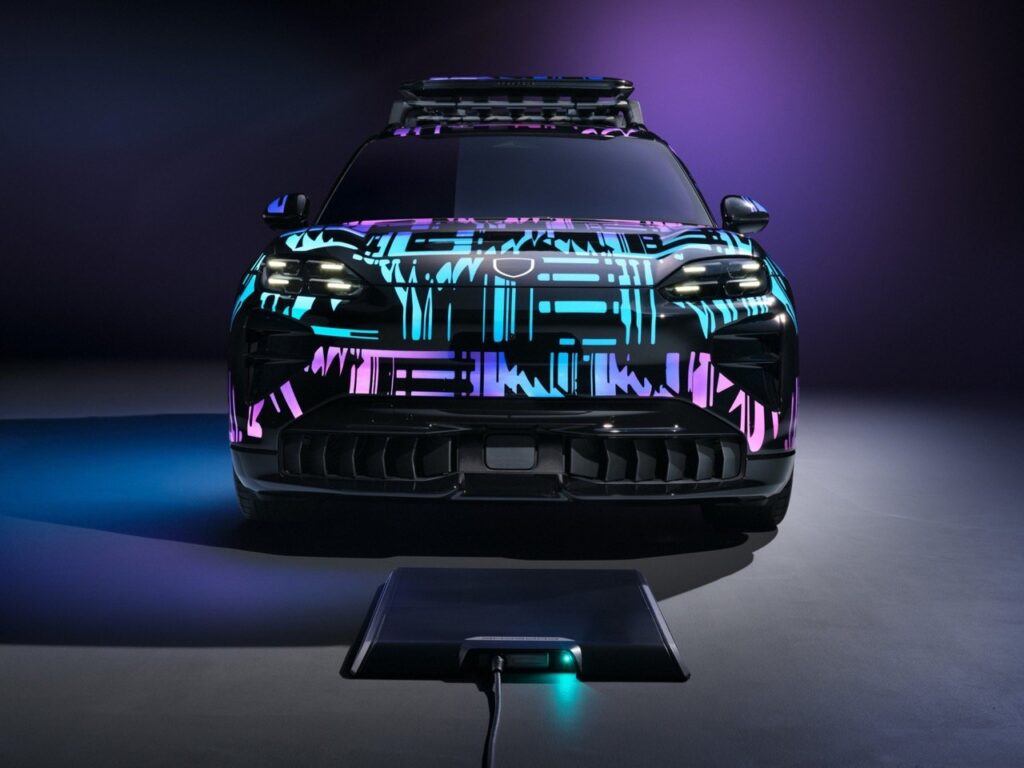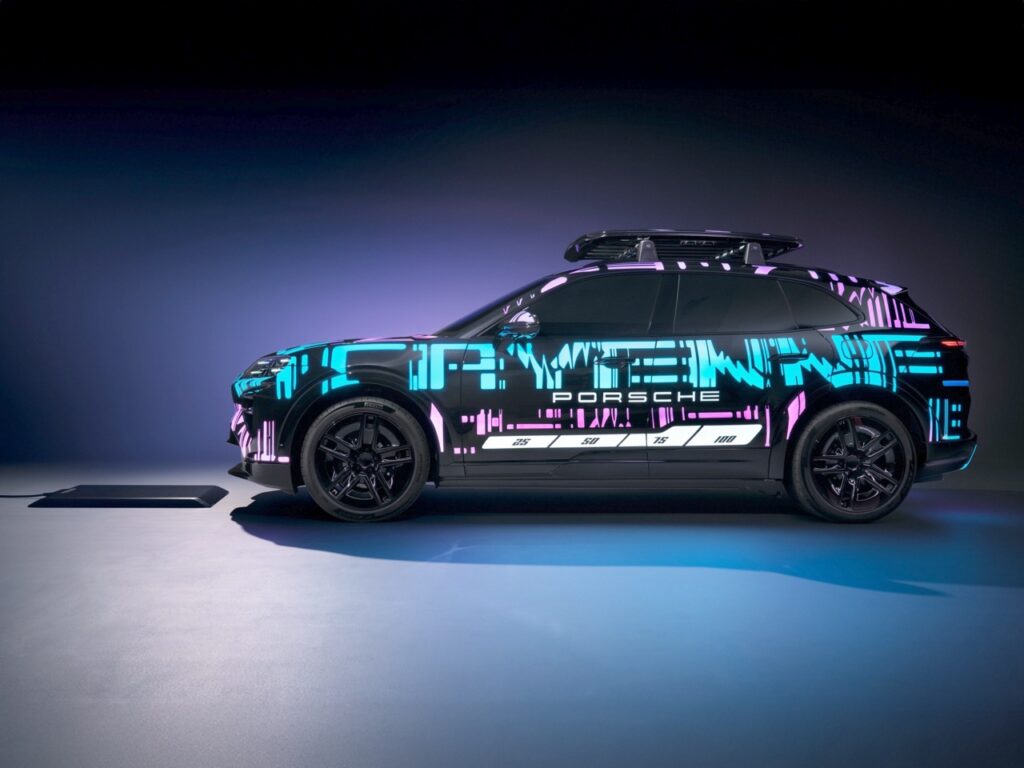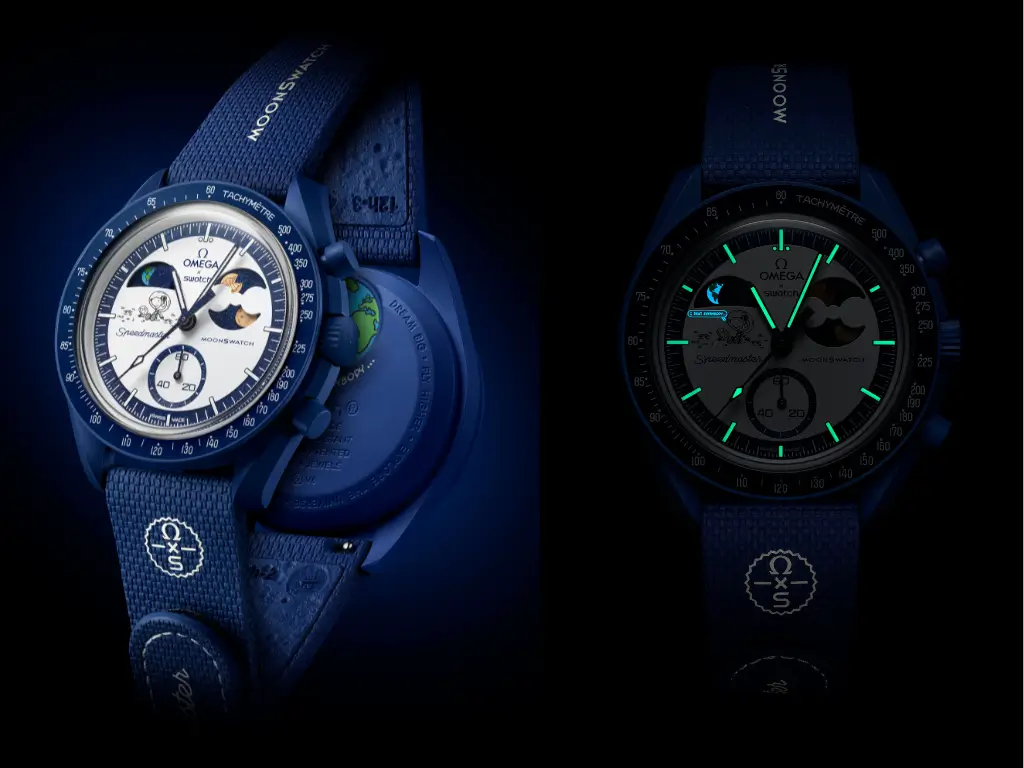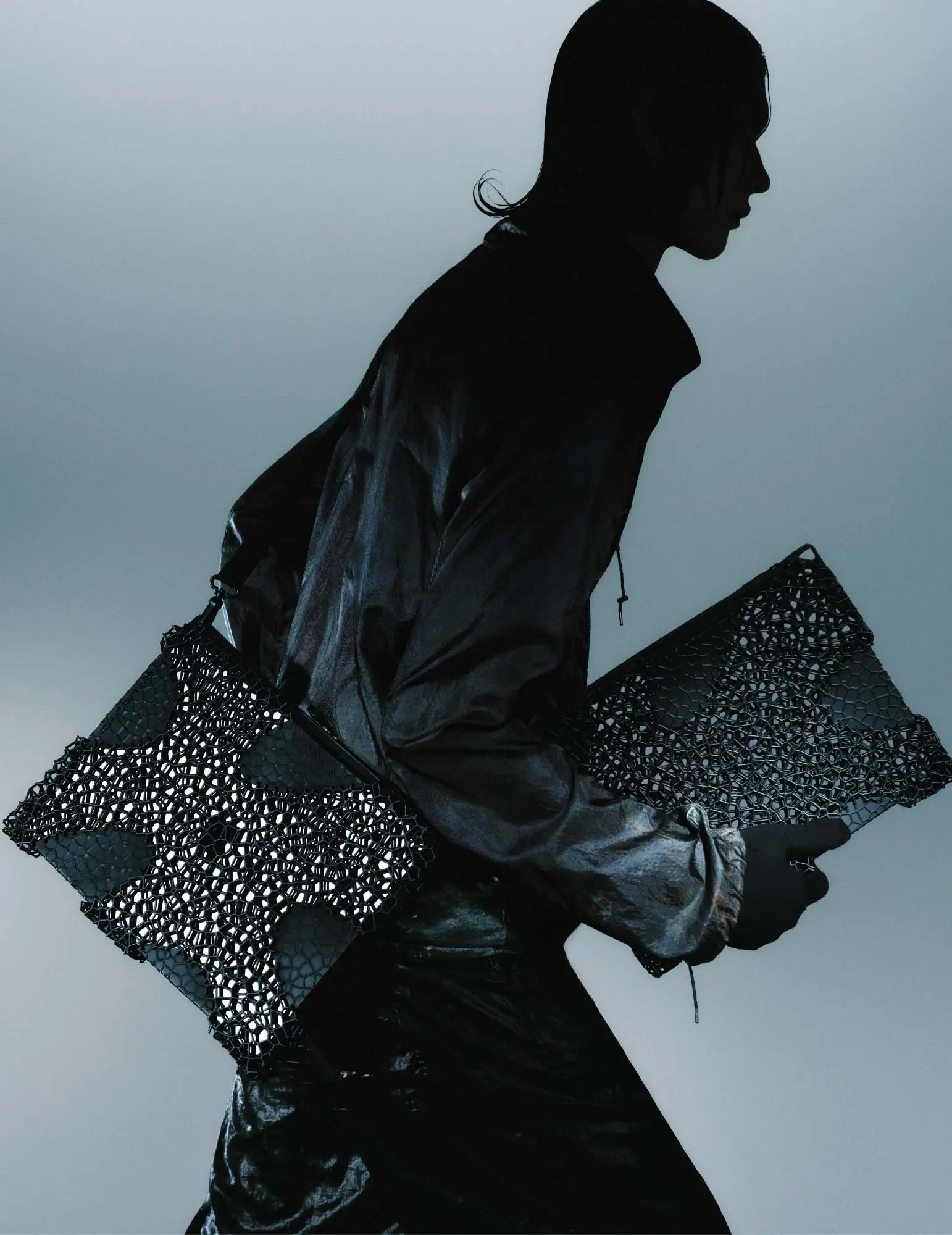You’ve been doing it for years with your phone. Walk in the door, toss it on the little pad by the keys, and it charges. No fumbling with a frayed cable, no flipping the plug three times before it fits, no cords cluttering the table. Wireless charging for handheld devices has become so normal that most people never think about it anymore.
Now imagine that same ritual applied to the car in your garage. Instead of plugging in a heavy cable every night, you simply park. No clicks, no connectors. The car begins to charge the moment you walk away. It sounds like a sci-fi convenience reserved for concept sketches and futuristic movies, but Porsche has announced that it is bringing exactly this system to the market.
Set to debut as an option on the all-electric Porsche Cayenne in 2026, this wireless charging solution was previewed at the IAA Mobility 2025 showcase. What was once a technical experiment is now about to shape daily EV life for Porsche’s customers. It represents a significant shift: removing one of the last points of friction in electric mobility—the act of plugging in.
The Friction Point in EV Adoption
For all the praise electric vehicles receive—instant torque, quiet rides, sleek design, zero tailpipe emissions—there has always been a nagging truth: charging isn’t as seamless as refueling. Plugging in at home may be simple, but it’s still an extra step. Public charging adds another layer of unpredictability: lines, incompatible plugs, or broken stations.
At-home charging, where most EV owners do the majority of their refueling, is often pitched as easy. Yet Porsche’s engineers recognized that the daily ritual still requires physical engagement. Even a small hurdle can become tiresome when repeated hundreds of times a year. Porsche’s philosophy has always been about blending performance with convenience, and here they spotted an opportunity.
By eliminating the cable from the process, they are not just saving drivers a few seconds. They are transforming the psychology of ownership. Charging becomes invisible. You don’t think about range anxiety or remember to plug in. It just happens.
How Wireless EV Charging Works
The principle behind the technology is called inductive charging. At its simplest, it is the same process powering your phone pad: an electromagnetic field transfers energy between two coils, one in the pad and one in the device.
For an EV, however, the scale is vastly different. Instead of milliamps for a smartphone, the system needs to deliver kilowatts for a 2.5-ton SUV. That requires:
-
Ground Pad Unit (GPU): A flat platform, slightly larger than a doormat, installed on the garage floor. It’s wired into the home’s electrical supply.
-
Vehicle Receiving Unit (VRU): A receiver coil mounted to the underside of the car.
-
Alignment Assistance: A camera or software ensures the car is properly positioned over the pad. Porsche’s system uses guidance on the infotainment screen to help drivers park with precision.
-
Charging Control Software: Communication between pad and car ensures safe energy transfer, adjusting for efficiency and cutting off if misalignment occurs.
Early prototypes of wireless EV charging suffered from inefficiencies—losing a chunk of energy in transfer. Porsche claims its production-ready system achieves over 90% efficiency, comparable to a wired home wallbox.
Why Porsche, Why Now?
Porsche is not the first to experiment with wireless charging. BMW and Mercedes have tested pilot programs; startups have showcased concepts. But Porsche is the first major automaker to confirm a consumer-ready rollout tied to a mass-market production vehicle.
Why Porsche? Several reasons:
-
Brand Philosophy: Porsche customers expect cutting-edge technology that enhances the driving experience without clutter or fuss.
-
Haute Segment: Premium buyers are more likely to pay for convenience features that elevate ownership.
-
Market Timing: As EV adoption grows and more people install home chargers, offering a wireless option cements Porsche as an innovator, not a follower.
-
Cayenne as a Testbed: The Cayenne SUV, a volume leader for Porsche, provides the perfect platform to introduce the feature at scale.
By setting the debut in 2026, Porsche gives itself time to refine manufacturing, ensure reliability, and integrate the technology seamlessly into its after-sales network.
From Sci-Fi to Driveway
Think back to science fiction films of the late 20th century. Electric vehicles would park themselves, recharge wirelessly, and talk back to their owners. We may not have self-parking hover-cars yet, but the convenience of invisible charging is now real.
The impact is cultural as much as technical. Once daily charging becomes a passive background function, EVs feel less like gadgets and more like natural extensions of the home ecosystem. Just as Wi-Fi routers made internet cables obsolete, wireless charging could gradually render plugs and sockets secondary.
For Porsche, this isn’t just a feature—it’s a statement of intent. They are telling the market: electric mobility can be elegant, luxurious, and free of compromises.
Addressing the Skeptics
Of course, every innovation brings skepticism. Critics will point to several concerns:
-
Efficiency Loss: Even at 90% efficiency, some energy is lost compared to direct cable charging. Porsche’s counter is that convenience outweighs fractional energy waste.
-
Installation Cost: A wireless charging pad will not be cheap to install, especially compared to a standard wallbox. Porsche is betting that its buyers value time and ease of use more than upfront cost.
-
Compatibility: For now, this is a Porsche-specific solution. Cross-compatibility standards may take years to emerge.
-
Durability: A pad on the floor must withstand weather, dirt, and long-term wear. Porsche engineers have emphasized ruggedization and sealed construction to ensure reliability.
The critics are not wrong—but they underestimate the cultural pull of convenience. Consumers rarely choose the most efficient option; they choose the one that feels best.
What This Means for the EV Market
If Porsche succeeds, the ripple effects will extend beyond its customer base. Other automakers will feel pressure to follow. Standardization bodies may push for shared specifications, much like USB-C has become universal for electronics.
Wireless charging also dovetails neatly with other emerging trends:
-
Autonomous Parking: A car that can park itself over a pad requires no driver intervention, closing the loop on fully automated refueling.
-
Smart Homes: Integration with home energy systems, solar panels, and smart meters could allow cars to charge invisibly when rates are cheapest.
-
Public Applications: Imagine taxi stands or ride-hailing fleets idling over pads instead of plugging in between rides.
The long-term vision is clear: cables will feel as outdated as dial-up internet.
Porsche’s EV Roadmap
The Cayenne wireless charging debut is not an isolated experiment. It fits into Porsche’s broader EV trajectory:
-
Taycan: Porsche’s first all-electric sports car, setting performance benchmarks.
-
Macan EV: Launching in 2025, positioned as a volume seller in the premium SUV segment.
-
Cayenne EV: Arriving with wireless charging, blending luxury, size, and cutting-edge technology.
-
918 Successor (Speculated): A halo electric hypercar is rumored to appear later in the decade.
Each step builds momentum. Porsche is positioning itself not just as an EV maker, but as an EV experience leader.
Living With Wireless Charging
Let’s imagine daily life with the system.
You arrive home late after work, groceries in the trunk, kids asleep in the back. You pull into the garage, guided by an onscreen alignment cue. You shut the door and walk inside. By the time you’ve unpacked the groceries, your Cayenne is quietly sipping electrons.
In the morning, it’s fully charged. No cables to trip over, no frostbitten hands wrestling with connectors on winter mornings. The ritual of charging disappears into the background. You simply own a car that is always ready.
This shift changes how drivers perceive electric mobility. Instead of adapting habits to accommodate the car, the car adapts to them.
The Broader Philosophy of Effortless Flow
Porsche is not just selling hardware. They are selling effortlessness. Luxury in the 21st century is increasingly defined by invisible convenience.
Think of Apple’s AirPods, which connect instantly without buttons. Or Tesla’s over-the-air updates, which improve cars without dealer visits. In each case, the product removes friction from life. Porsche’s wireless charging is part of this continuum: an invisible luxury.
For Porsche, aligning with this philosophy also strengthens brand loyalty. Once customers experience seamless charging, it will be hard to switch to competitors that require manual plugging.
The Road Ahead
The rollout in 2026 will be closely watched. Porsche’s challenge will be scaling production, ensuring flawless reliability, and convincing buyers that the premium is worth it. But history suggests they are well positioned.
After all, this is the company that popularized turbocharging in sports cars, pioneered dual-clutch transmissions, and redefined the SUV as a luxury performance vehicle. Each time, skeptics doubted. Each time, Porsche proved them wrong.
Wireless charging is the next chapter in that legacy.
Impression
From phone pads to garage pads, the evolution feels natural. What began as a small convenience in consumer electronics is now reshaping automotive design.
The Porsche Cayenne of 2026 won’t just be an electric SUV—it will be the first vehicle to make charging disappear. Owners will park, walk away, and live their lives. The car will quietly take care of the rest.
This is how the future arrives: not with a bang, but with the subtle click of a garage door closing on a car that is already charging itself.
No comments yet.

